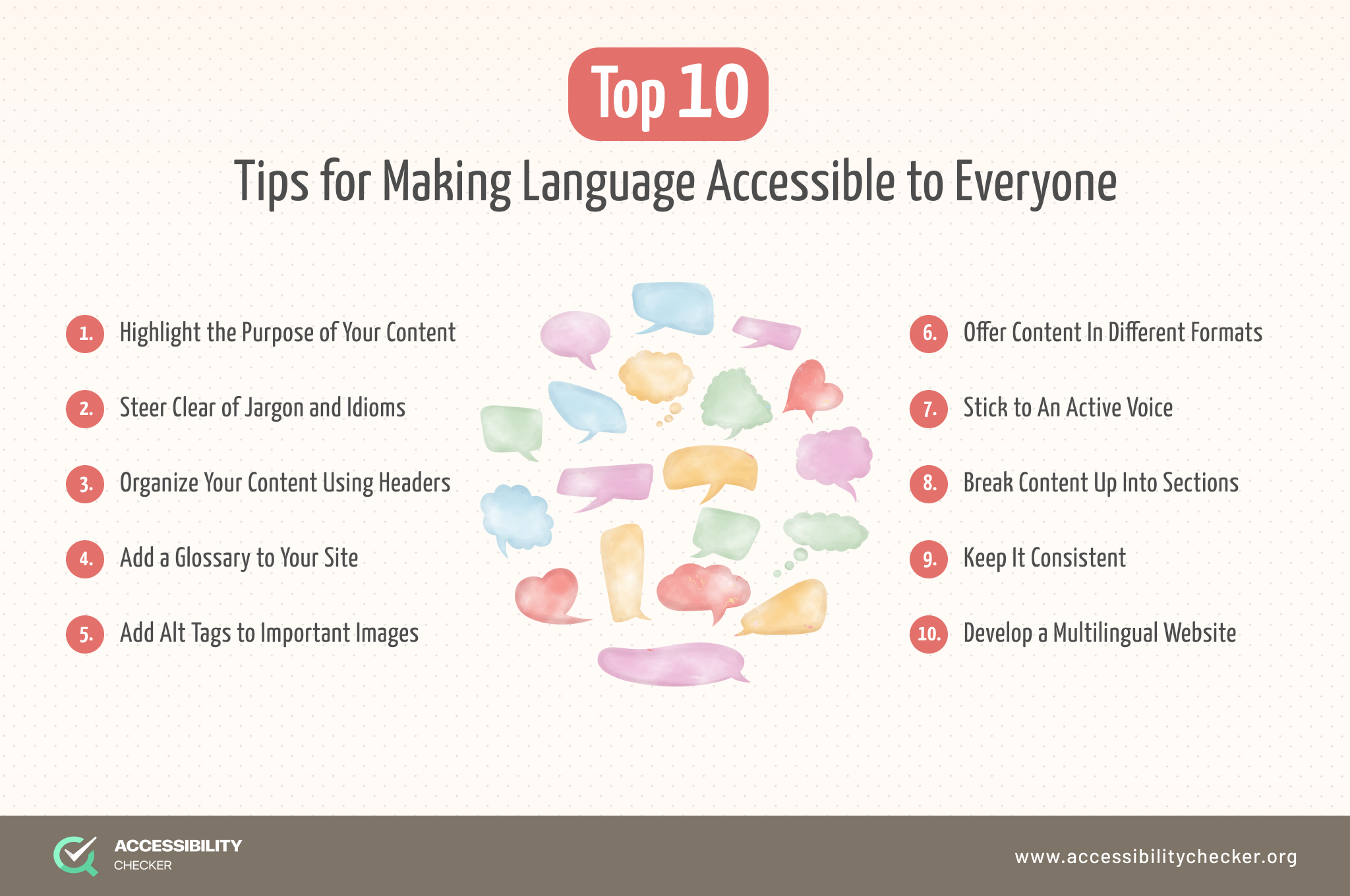In a diverse world, language stands as both a bridge and a barrier.
Languages are at the heart of human expression, however, in a globalized society, linguistic diversity can sometimes pose significant challenges. Whether it’s navigating international business transactions, engaging in cultural exchanges, or ensuring equal access to essential services, the ability to bridge language barriers is essential.
Language accessibility is an integral part of what makes your website inclusive – it also ensures you’re compliant with the latest web accessibility standards.

Language accessibility is the process of ensuring your content is accessible to all, regardless of age and ability.
Website visitors with disabilities, people with poor literacy skills, as well as those who speak foreign languages, should all be able to understand the content on your site.
There are a number of steps you can take to ensure language accessibility on your site, including the implementation of multilingual versions, adding relevant alternative text, and including both audio and video content where necessary.
By prioritizing accessible language, you are not only expanding your reach as a brand but complying with the latest Web Content Accessibility Guidelines (WCAG) too.
Inclusivity is at the heart of today’s web accessibility guidelines and disability acts, including the ADA, AODA, and the EAA.
Any steps you can take to comply with these requirements will help keep unnecessary and costly lawsuits at bay. It will also position your organization as one that values inclusivity, boosting brand loyalty.
Here are some of the most important steps you can take to ensure language accessibility.
No matter who accesses your website, chances are they’re going to have a short attention span. Most people will only scan your copy or read the first sentence or two to decide whether the content is what they’re looking for.
To make your content more accessible and easy to understand, ensure that the purpose of your content is clear right from the start.
Depending on your industry, you may want to include jargon and idioms in your content, but this can make it inaccessible to many users.
While you don’t need to avoid jargon completely, it’s best to simplify any words or sentences where possible. Idioms can also be confusing. A phrase that makes sense in your country or region may make sense to you, but it could get lost in translation for other users.
Some site visitors who rely on assistive technology such as screen readers tend to skim content.
Headers make it easier to organize and compartmentalize your content, making it easier for all users to understand and predict.
In the event that you cannot avoid the use of complex terminology, acronyms, or abbreviations in your copy, it helps to add a glossary or index to your site.
This way, any users who are unfamiliar with or unsure of certain terms can access a more simplified explanation.
The images on your site help tell a more complete story, but they won’t mean anything to a user with visual impairments.
For this reason, it’s essential to add clear and relevant alternative text to your most important images and media. This way, a screen reader or braille device can better explain an image to a user in relation to the rest of your content.
Text doesn’t have to be the only way you convey information on your website. Some users would prefer to listen to an audio transcript or watch a video if they struggle with text.
Wherever possible, aim to include audio and video content on your site to cater to the preferences of different users. These variations can also make your site and content more engaging and simplify concepts that may be more complicated.
Sticking to an active instead of a passive voice is another way to keep the language on your site more accessible.
Using an active voice is more direct and easier to understand. Instead of saying “the girl held a balloon”, say “a girl is holding a balloon”.
Along with using headers, it’s also important to break your content up into more digestible sections. Your paragraphs should not contain more than four sentences and each sentence should be as simple as possible – don’t use more words than are necessary.
When creating content, try to stick to the same term. For example, if you’re writing about education, it’s best not to switch between teacher, educator, and instructor, rather choose just one.
You should also be wary of using words that look the same but have different meanings. Some examples include quarter, bat, tear, desert, and bank.
This is not always necessary but it can go a long way in boosting language accessibility on your site.
You will more than likely need to work with a developer to achieve this and you will need to have a strategy in place. For example, deciding which languages are most important to you based on your target audience.
There is also the option of using a plugin depending on the content management system your site is built on.
Once you start the process of remediating your website to comply with the latest WCAG standards, language accessibility will automatically come into play. However, it’s still important to take additional steps to ensure your content is as accessible and easy to understand as possible.
Making language accessible on your site means being concise, sticking to an active voice, and writing for your audience. The point is to make it as easy to understand as possible, which will cater to people with disabilities, those with low literacy skills, and people who speak a different language. Breaking your content up into more digestible sections will also help.